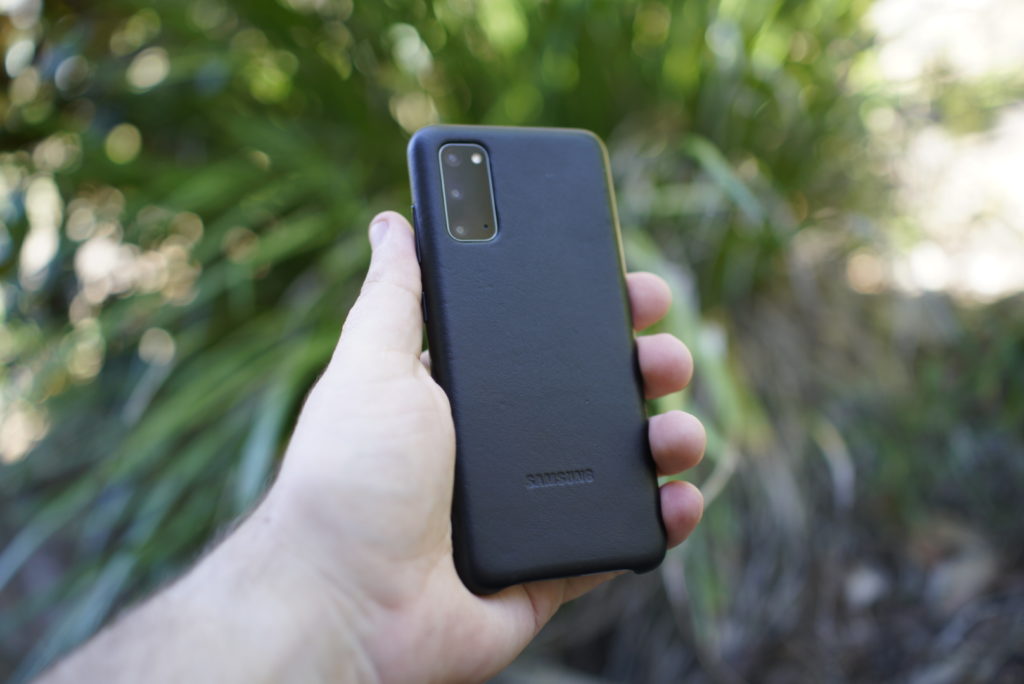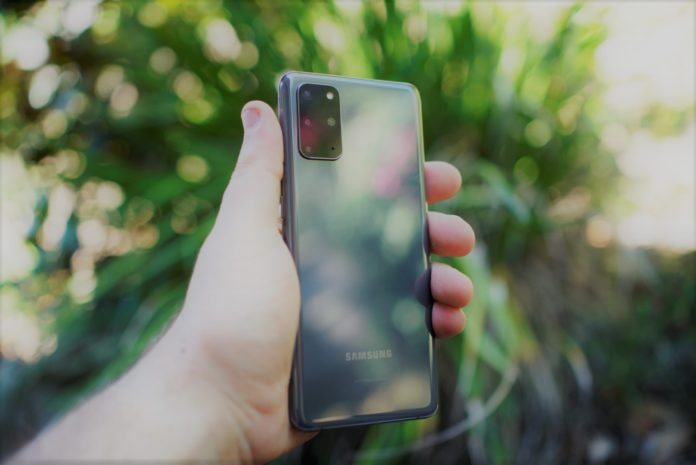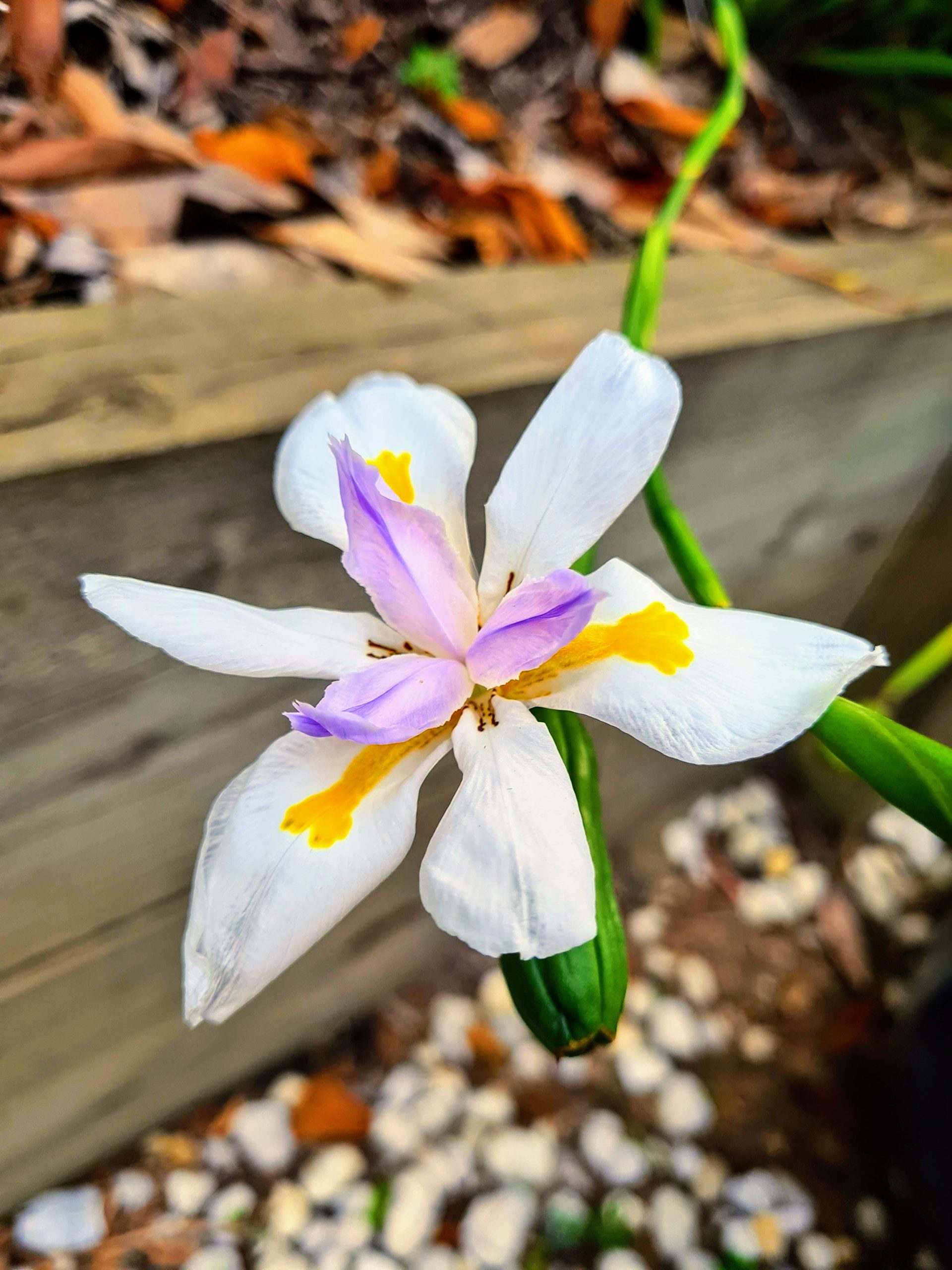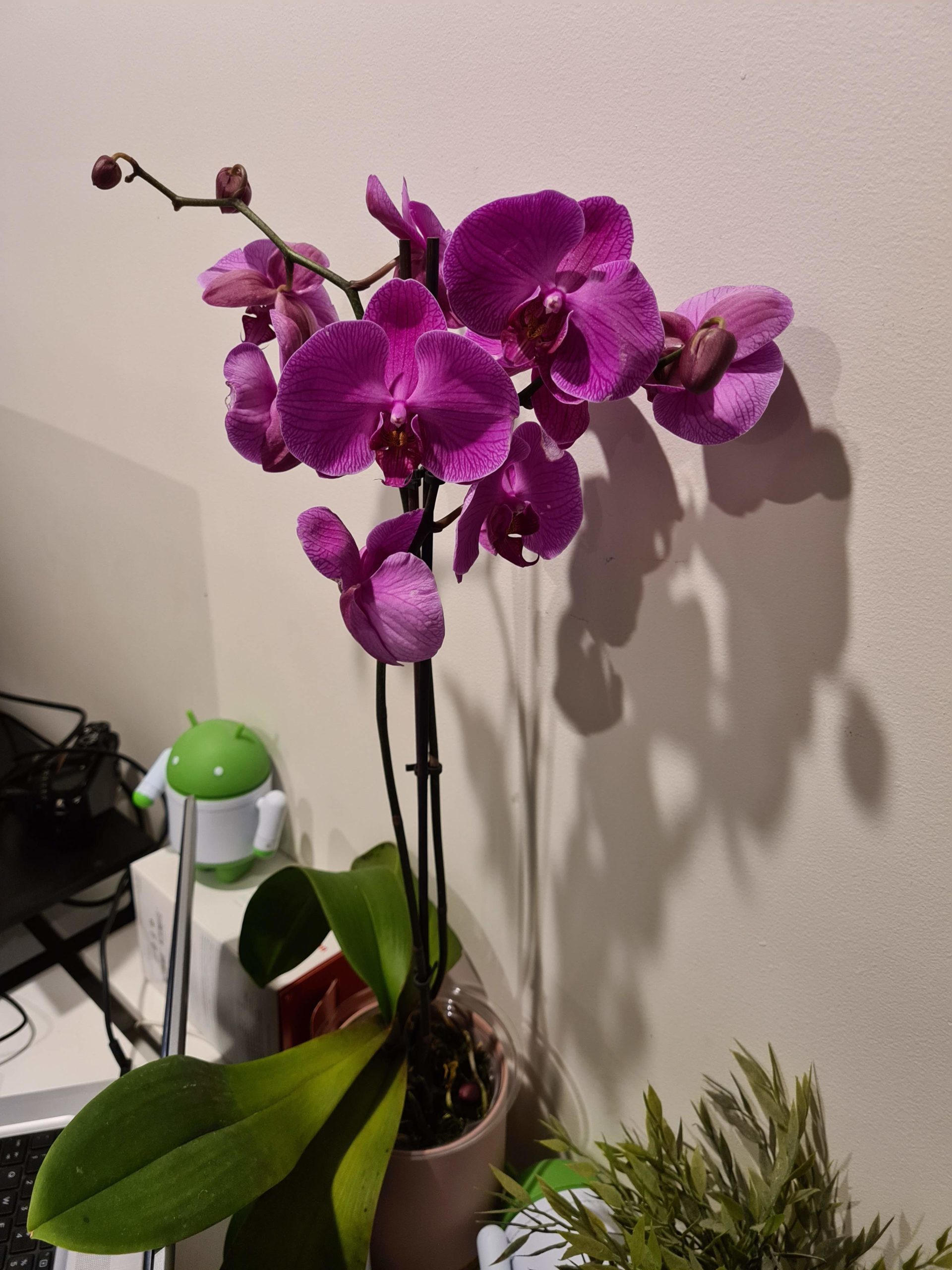I’m going to say this at the outset, loud and clear – reviewing a phone during the lockdown following a viral pandemic is an interesting exercise; it’s hard to do really exciting photo samples when you can’t really leave your house. It’s hard to comment on all-day battery life when you’re mostly at home in front of a charger all the time. It’s hard to talk about all the exciting things you can do with a smartphone when .. really .. there’s nothing much exciting to do.
That said, I’ve spent the last month with Samsung’s Galaxy S20 5G (and, in small doses, the Galaxy S20+ as well), and I am quietly satisfied with what Samsung has achieved in this year’s Galaxy S20 range of smartphones.
In the past, we’ve criticised brands – including Samsung – for proceeding too safely, for too little innovation and for only evolving their products when a revolution would be more exciting.
However, in 2020, we don’t need any more revolution. We’re in a time of great upheaval, and not just in technology terms; no, our upheaval is across our entire society, across its entire breadth, width and depth.
Internationally, countries are being brought to their knees. The USA, once referred to as a global superpower, is now the very human face of the COVID-19 pandemic, with more deaths than any other country and cases rising daily. Hell, they’re digging mass graves in New York. I never thought I’d see that in my lifetime.
Locally, life is on its head, too. While workplaces remain open, we’re living in a police state where there are – broadly speaking – 4 to 5 legitimate reasons to legally leave your house. Do so otherwise and you risk fines and imprisonment.
With this terrifying reality as a constant spectre, our needs from technology – including our smartphones – has manifestly changed.
Where once I needed all day battery life, today it doesn’t matter – I’m mostly at home and I can charge my phone whenever I want. Not that I have to, mind you – both the Samsung Galaxy S20 5G and S20+ last all day comfortably, even with lots of media and gaming.
Photography all of a sudden feels less important – you can’t travel anywhere nice to take photos, and there’s only so much around your house to take photos of. 50X zoom really doesn’t matter either, unless you’re into bird watching or spying on your neighbours.
Things that matter are good cell performance – so you can receive calls, even if you live in a valley as I do – and good call performance. Working from home, your phone goes from a handy tool to an essential. It becomes your lifeline to communicate with family, friends, colleagues and clients – without it, you’re in a world of trouble.
So, with our world all topsy turvy right now, here’s how I’ve found Samsung’s 2020 smartphones from the Galaxy S20 series. Note, though, Scott has already reviewed the Samsung Galaxy S20 Ultra quite extensively – this review will be more focused and only looking at key features.

What’s inside?
The two phones I’m reviewing are more alike than they are different; the internals, camera and functionality are virtually identical. The big differences are screen size, and while the S20 5G has 5G (obviously) the S20+ I’m reviewing does not, but there are 5G variants available.
Here’s the key details:
| Galaxy S20 5G | Galaxy S20+ | |
| Network Support | 2G/3G/4G/5G (SA/NSA/Sub6) | 2G/3G/4G |
| Network Speed | LTE Cat 20 (2Gbps)
5G (5Gbps) |
LTE Cat 20 (2Gps)
No 5G |
| Size | 151.7 x 69.1 x 7.9 mm | 161.9 x 73.7 x 7.8 mm |
| Weight | 163g | 186g |
| SIMs | Dual – 1 Nano, 1 eSIM | |
| Display | 6.2-inch AMOLED | 6.7-inch AMOLED |
| CPU | Octa-core (2×2.73 GHz Mongoose M5 & 2×2.50 GHz Cortex-A76 & 4×2.0 GHz Cortex-A55) | |
| RAM | 12GB | 8GB |
| Storage | 128GB | 128GB |
| Cameras | 12 MP, f/1.8, 26mm (wide), 1/1.76″, 1.8µm, Dual Pixel PDAF, OIS 64 MP, f/2.0, (telephoto), 1/1.72″, 0.8µm, PDAF, OIS, 3x hybrid optical zoom 12 MP, f/2.2, 13mm (ultrawide), 1.4µm, Super Steady video 0.3 MP |
12 MP, f/1.8, 26mm (wide), 1/1.76″, 1.8µm, Dual Pixel PDAF, OIS 64 MP, f/2.0, (telephoto), 1/1.72″, 0.8µm, PDAF, OIS, 3x hybrid optical zoom 12 MP, f/2.2, 13mm (ultrawide), 1.4µm, Super Steady video 0.3 MP, TOF 3D, f/1.0, (depth) |
| Battery | 4,000 mAh LiPo | 4,500 mAh LiPo |
| Other features | 25W Fast Charging
USB PD 3.0 No 3.5mm jack |
|
If you take out 5G – because you can get the S20+ with 5G as well – the main differences are battery, screen and case size, and the addition of a time-of-flight camera on the S20+ variants. Otherwise, they’re broadly the same and to use they feel identical. The RAM difference between the S20 5G and S20+ is unnoticeable, despite the latter having 33% less.
The reality is, though, we’ve reached a point that smartphones aren’t defined by what’s inside so much as whether there are any notable exclusions, and more broadly, how they work.
In the case of Samsung’s Galaxy S20 range, there really aren’t any notable exclusions.
The Galaxy S20 5G doesn’t support mmWave 5G networks, but seeing as there aren’t any of these anywhere yet – and likely won’t be many during the life cycle of the handset – it really doesn’t matter. There’s no 3.5mm headphone jack, but I can’t remember the last time I used one anyway, so who cares.
Everything else you’d want in a modern smartphone is present – decent battery, latest Android, NFC for payments, WiFi and Bluetooth for connectivity, USB C and fast charging, wireless charging, reverse charging if you must, great cameras and a great display.
Check.

How’s it come together?
Brilliantly. This is a smartphone (and a smartphone series, really) that effortlessly pulls everything you’d want from a smartphone together, and does it without fanfare, fuss, or bells and whistles.
While other smartphone manufacturers are looking for the party piece, something that truly stands out, Samsung hasn’t really gone down that path this year (and, really, hasn’t for a few years either). Instead, it makes a great package and the Galaxy S20 embodies that workmanship.
Unless you opt for the Galaxy S20 Ultra with its ridiculous zoom power, what you get is a sensible smartphone that does everything a smartphone can do in 2020, in a neat, functional package that looks great and works better.
These phones are both fairly drab colourwise – one’s black, one’s grey – and the only thing that really stands out at all is the camera bump area. Otherwise, they’re fairly non-descript. There’s no fancy Aura colours ala Huawei’s P30 Pro, but there are other colours in the range. I just don’t have them.
What they look like, though, really doesn’t matter. Remember, we’re in a lockdown where you’re not meant to be interacting with others, and no one’s going to see your phone or care what it looks like!
The important things, though, are here. All day battery life is a given, even if you can charge whenever you need it. I’ve not had to charge the Galaxy S20 5G (with its smaller battery) at all during the day, if you exclude the first few days of getting to know a new phone. With the fast charger – provided you’ve got it with you – you can top off the battery stupidly quickly anyway, so if you’re in need during the day your recharge doesn’t take long at all.
Call quality and performance are great – even in our little valley on Sydney’s northern outskirts, I can make and take calls clearly without issue. Of course, Samsung’s smartphones support Voice over Wi-Fi so – provided you’ve got a good internet connection and Wi-Fi at home – your calls will use that instead of cellular networks, meaning you’re guaranteed great call quality regardless of whether you’ve got strong cell signal, or weak (as we do).
Unlike some phones which can be a little quiet when actually used as phones, Samsung’s Galaxy S20 range is suitably loud so you can hear the other party clearly; there’s none of what we saw with some of last year’s phones which were generally too quiet (Huawei P30 Pro) or had very directional sound (LG V50 ThinQ). You couldn’t forget this thing was designed to actually be used as a phone, and that’s good.
I’ve not had to take too many photos really, but before we got locked down, Rach and I flew to Melbourne to attend Scott’s wedding and the photos there were stunning. Granted, Jason took some simply brilliant photos with his Huawei P30 Pro, but I like to think I took some good ones too with Samsung’s little S20 5G. It might not be the photography powerhouse that Huawei’s P30 and P40 series seem to be, but it doesn’t need to be – it takes great photos day and night, and that’s all I need.
There’s other features that others might care more about, such as a 120Hz display refresh option, reverse wireless charging, blah blah blah but really … I don’t care about these things. Nice to have, but probably never going to be used.
What am I missing?
Nothing.
It’s tempting to leave it there. There really isn’t anything missing.
Samsung’s software, once intrusive, is actually really great in 2020. It doesn’t add too much on top of stock Android, but what it does add is very usable and welcome. There’s nothing in the user interface that I find annoying or unwelcome, from a clean, easy-to-navigate settings app to a useful quick settings menu, a minimal always-on display that shows what I need to see and a pretty decent default launcher.
That said, I’ve replaced the launcher and Samsung’s keyboard – because I prefer Nova launcher and GBoard – but that’s about it, and you absolutely don’t need to change these things if you don’t want to.
Samsung’s camera interface is fantastic; while some OEM camera interfaces take away from the experience, Samsung’s is among the best – zooming is intuitive, switching between modes is easy, and all the useful tools to take the best photo you can are right there.
Should you buy one?
My only reservation in recommending any of Samsung’s Galaxy S20 range is the price.
In just a couple of months, we’re in a brave new world where huge numbers of Australians have been laid off, stood down or had their incomes reduced; I’d wager there’s not a single one of us that doesn’t know someone who’s been affected. From close friends and family alone, I know one person laid off, two stood down without pay, one who’s hours have been cut in half, and a number of casuals who’ve had hours reduced or cut completely. Those of us still working are feeling a whole lot less job security than perhaps we once did.
With that in mind, expensive smartphone purchases have gone from something many people can make happen to somewhat of a luxury; Australia’s median wage is $48,360 a year, and if you’ve lost that in part or entirely, then an expensive smartphone probably is well down your list behind food, housing and health.
Even if you’re still earning a good salary, your willingness to spend any disposable income on a smartphone is likely reduced; a new smartphone has gone from desirable and justifiable to an entirely optional purchase. If you have a good smartphone that works, why splash out on a new one when everything could change tomorrow and that $1300 could be better used for something far more necessary.
Australians are still spending plenty at retail, but the shift has undeniably been from luxury/consumer goods to things far more necessary like groceries, things that are useful when stuck at home (e.g. home office setups, exercise gear, entertainment for children) and even things like coffee machines.
In this environment, Samsung – and every other maker of expensive smartphones – faces a much harder job of convincing people to spend big on an expensive smartphone. Undeniably, Samsung’s Galaxy S20 range is fantastic and easy to recommend, but it’s a purchase far fewer people would be making now than they would if COVID-19 hadn’t happened.
I’m not going to shy away from recommending these phones – they are brilliant – but I understand that for many people who’d otherwise buy one, it’s a much tougher decision in 2020.
Fortunately, there’s plenty of more affordable smartphones that are equally as good; Oppo, realme, Samsung all have smartphones in the mid-range price category (between $200 and $600) that all feature big screens, big batteries, decent cameras and a (generally) pretty good experience.
Sure, you miss some premium features – the fastest CPUs, the most RAM, and most often, the best cameras – but for 20% of the price, you can get 70-80% of the features, and in these times where money needs to be sensibly managed, that’s damned good value.
Realme’s C3 – priced at just $269 – is a great example of this; you get a huge battery, huge display, triple camera setup, Android 10, NFC for payments, fingerprint security, 64GB storage and 3G RAM. While it’s obvious that some specs are impacted by the lower price, Scott’s impressions of the phone are overwhelmingly positive, and that’s a good buy for a great price.
Go a little higher and you get Oppo’s A91 for $499, which includes a 6.4-inch display, 8GB RAM, 128GB storage, four rear cameras, a 4,000 mAh battery and in-display fingerprint sensor. It mightn’t have the world’s fastest processor, but if that doesn’t matter, you get 90% of what Samsung’s Galaxy S20 range offers at well under half the price.
Samsung’s Galaxy S20 range is easy to recommend, sure, but there’s great options that cost a lot less in a time where money is tight.















Anyone else having wifi issues with their S20 Ultra?
The wifi on my s20 plus 5G is pretty weak compared to my Pixel 3a. Maybe its something to do with the large battery, camera module and glass.
The s20+ battery is terrible. I rang Samsung – they were unhelpful and unapologetic. Moreover, when you activate the ‘good stuff’, like 120hz or better screen resolution, battery longevity plummets even more. Is there any point to these additions to software/hardware if the battery can’t cope. Putting apps into deep sleep and running on power mode to reduce battery consumption marginally helped. I’m still barely making it to 2pm with battery anxiety kicking in when I see 40%. My Huawei Mate 30 would last well over 24 hrs before I even saw a 40%. In summary…. I don’t see the… Read more »
The battery life on my s20 plus 5G is pretty ordinary as well. I,ve switched back to 60hz display and 70% processor speed to try and get more out of it. Again the batttery life on my Pixel 3a XL was much better due top the mid range processor and dimmer display.
Yes…. Same here. I’m running at 70% speed, 60Hz, standard HD screen res and 5G off. So all the good stuff I bought the phone for, is now turned off. Which raises the question, why bother?
Yep, a pity OnePlus don’t sell their phones here
Interested to see your screenshot of battery usage and screen on time. My s20 ultra won’t last a day and SOT never pass 4 hours before a charge.
In the specs at the start you have shown s20+ as 8gb ram which is wrong. It has 12gb ram.
Actually no, you’re wrong. Only the 5G variant has 12GB. The 4G variant has only 8GB.
Ah, the everconfusing local and international Samsung lineup…
Great article I wish you published last weekend. There isn’t much mention on the internet in Australia about the 5G deficiencies regarding millimetre wave for the S20. If I had seen your article before hand I would have spent the extra cash on the S20 plus. I found out through my own investigation that this phone is never going to crack 1 gigabit per second with middle and low frequency bands. I feel ripped off Samsung stop releasing phones in half measures. I just laid down $1,500 on this disappointment.
The S20+ is the same size and has the same look as the A71, so is that a good alternative if you don’t care about wireless charging, etc?
Definitely
Here’s my review.
Slightly better in everyway. Not worth the money and neither was last year’s models. Samsung have the slowest updates in Australia ever period.
Dunno, I received the April security update within 10 days of the start of the month, and I did with March’s too.
Well, from a value for money perspective, Samsung’s recent phones have never been budget flagships. For that, you’ll have to turn to OnePlus or Realme or Xiaomi. But if you want an excellent high-end Samsung phone, it’s never been a better time to get a S10-series phone.
I have had 4 galaxy phones among others , and i think samsung has lifted his game in recent years in regard to updates , certainly samsung is not google in regard to updates , but you really wouldn’t expect them to be . My nearly three year old S8+ is still getting security updates , and is on March 2020 which is not bad I think , and about two months more prompt than my huawei device which is less than a year old. My galaxy note 9 is on one ui 2.0 android 10 and its usually a… Read more »
Good review Chris , sounds like very good phones , and i thank you for going into detail about how the phone works as an actual phone for communication purposes ,
A lot of the time in the many reviews we see these days , often it seems reviewers look at the media and shiny bits , but overlook this important area of just being a phone .
Thank you.